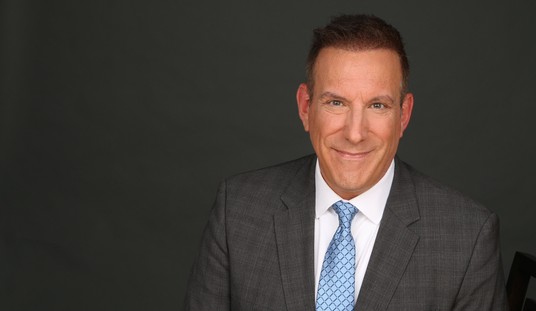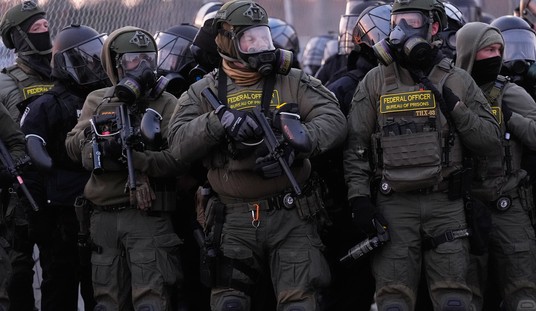Michael Osterholm has been beating this drum for a year. In a piece from July 2020, he responded to critics who were knocking him for being cautious about the benefits of mask-wearing. I’m not anti-mask, he replied. I’m pro-mask. Masks have their place. They do help. But by no means are they the best tool in our arsenal and overemphasizing their efficacy is destined to create a false sense of security in people.
Again, I want to make it very clear that I support the use of cloth face coverings by the general public. I wear one myself on the limited occasions I’m out in public. In areas where face coverings are mandated, I expect the public to follow the mandate and wear them…
[The general public] should be made aware that [cloth] masks may provide some benefit in reducing the risk of virus transmission, but at best it can only be anticipated to be limited. Distancing remains the most important risk reduction action they can take. … The messaging that dominates our COVID-19 discussions right now makes it seem that—if we are wearing cloth masks—you’re not going to infect me and I’m not going to infect you. I worry that many people highly vulnerable to life-threatening COVID-19 will hear this message and make decisions that they otherwise wouldn’t have made about distancing because of an unproven sense of cloth mask security.
The image of masks as near-foolproof penetrated deeply, though. Literally just this week, I warned a vaccinated older relative to be careful around crowds since people his age are at higher risk of a serious breakthrough infection from Delta. “It’s okay,” he told me, “I wear my mask.”
A cloth mask. Against a variant with a transmission rate on the order of nine, as contagious as chicken pox.
I have another older relative who’s *unvaccinated* and mostly stays at home to avoid infection but who ventures out on occasion when he gets cabin fever. A few nights ago he ordered takeout from a crowded restaurant — and went inside the building to get the order instead of asking them to bring it out.
Why? Well, he was wearing his cloth mask, which might optimistically be expected to filter out 20-50 percent of particles assuming that the mask is well-fitting. Take that, Delta.
The nuanced position between the extremes of “masks don’t work” and masks as a pandemic security blanket is that cloth masks help to a degree (especially if everyone’s wearing one) but aren’t as useful as medical-grade masks. Osterholm turned up on CNN this afternoon to gently reiterate that point. If you’re wearing a mask and it’s porous enough that you can smell smoke particles while wearing it then it’s porous enough for SARS-CoV-2 to reach you. Watch, then read on:
Michael Osterholm says "we should be focusing on vaccine, vaccine, and vaccine," and he wants to get rid of the term "masking" because "it implies anything you put in front of your face works." pic.twitter.com/y6LkQE2kCq
— The Post Millennial (@TPostMillennial) August 2, 2021
The usual suspects in the “masks don’t work” group are circulating that clip on social media as evidence that they’ve been right all along, but (a) logically masks were more useful against the original virus than they are against a variant that produces one thousand times the viral load of that earlier strain and (b) neither Osterholm nor any other expert is arguing that masks don’t work and should be abandoned. Their point is that people should be wearing masks of a higher quality. (It’s ironic to use Osterholm to argue against precautions since he’s one of the most notorious doomsayers in Biden’s stable, a guy who wanted a national lockdown to prevent the winter wave.) Scott Gottlieb has made that point recently too. A cloth mask might do a little for you against Delta, he argued, but…
Prior studies from NIOSH show simple cloth mask could cut transmission of flu by 50%. If that is a reasonable benchmark, does CDC believe spread of a strain it says is as contagious as chicken pox can be reduced by up to 60%? To achieve higher risk reduction mask quality matters
— Scott Gottlieb, MD (@ScottGottliebMD) July 30, 2021
A week ago he went on “Face the Nation” and urged people to get themselves an N95 mask, which are now abundant (as are counterfeits) after the shortage in the early stages of the pandemic:
.@ScottGottliebMD on Delta variant: “If you are vaccinated and you do develop an asymptomatic or mildly symptomatic infection, there is probably a higher chance you can transmit because there is just more of this virus.” pic.twitter.com/RLZdKeVuqk
— Face The Nation (@FaceTheNation) July 26, 2021
Why didn’t the public-health bureaucracy start hammering the message that we need better masks many months ago, after the initial bottleneck on medical-grade masks eased? Beats me. They’ve been clear from the start that N95s are the best option and I’ve understood for awhile that surgical masks are next best after that. (Especially if you wear a cloth mask over one so that it seals tightly around the mouth.) But there was no big “N95s now!!!” push from the White House or the commentariat before or during the winter wave that I remember.
Better late than never?
Since we’re on the topic of things we could have and should have done to better protect people from infection, at some point the world’s going to have to sit down and puzzle out why the vaccines brought to market were designed to be delivered via a shot in the arm instead of a spray up the nose. An intramuscular vaccine does a great job of preventing the virus from spreading throughout your body once it’s in your mouth and nose and replicating. But an intranasal vaccine will kill the virus in your nose and mouth, making it much less likely that you can transmit it to others. If we’d had intranasal vaccines from the start, vaccinated people might still be unmasked right now and incapable of passing the virus along, Delta notwithstanding
Although injected vaccines do reduce symptomatic COVID cases, and prevent a lot of severe illness, they may still allow for asymptomatic infection. A person might feel fine, but actually harbor the virus and be able to pass it on to others. The reason is that the coronavirus can temporarily take up residence in the mucosa—the moist, mucus-secreting surfaces of the nose and throat that serve as our first line of defense against inhaled viruses. Research with laboratory animals suggests that a coronavirus infection can linger in the nose even after it has been vanquished in the lungs. That means it might be possible to spread the coronavirus after vaccination.
Enter the intranasal vaccine, which abandons the needle and syringe for a spray container that looks more like a nasal decongestant. With a quick spritz up the nose, intranasal vaccines are designed to bolster immune defenses in the mucosa, triggering production of an antibody known as immunoglobulin A, which can block infection. This overwhelming response, called sterilizing immunity, reduces the chance that people will pass on the virus.
One study of an intranasal vaccine on animals found that it almost entirely prevented infection. It’s above my pay grade as to why Pfizer, Moderna, and J&J didn’t target the nose for delivery instead of the arm but it might have made masking unnecessary for the vaccinated population for the rest of the pandemic.







Join the conversation as a VIP Member